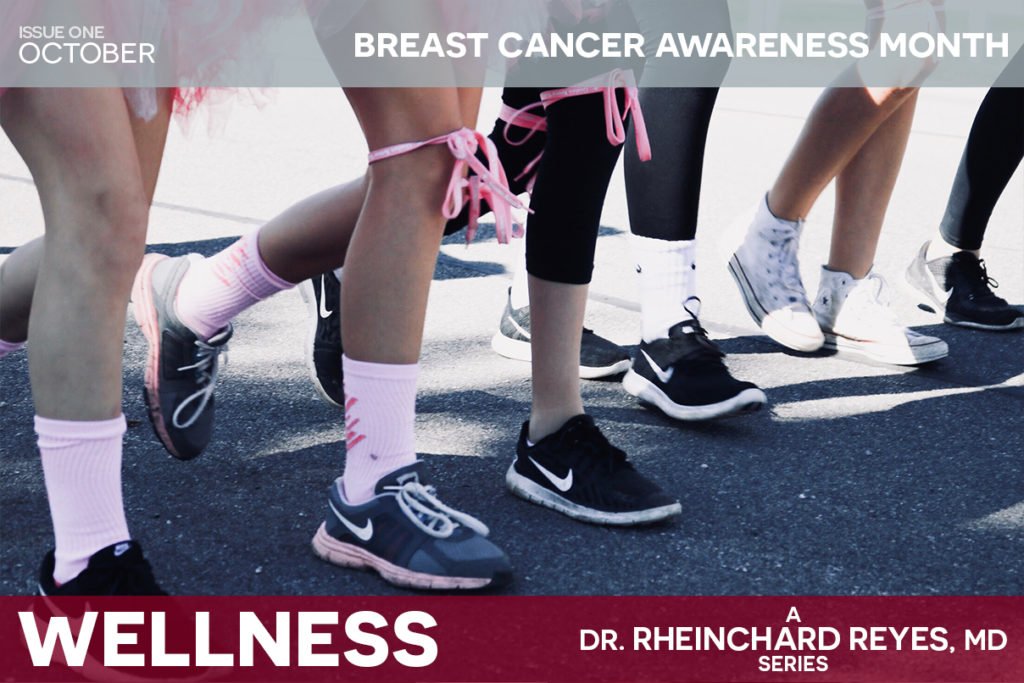October 1st marks the beginning of Breast Cancer Awareness Month. Each year, major breast cancer charities and organizations around the world aim to increase general consciousness of the disease in an effort to raise funds for research, prevention, diagnosis, treatment, and ultimately a cure. Although National Breast Cancer Awareness Month was founded in 1985, the first mention of cancer in recorded history was that of breast cancer in Egypt sometime around 1600 BC. In 2018, it is estimated that more than 330,000 women and over 2,000 men in the U.S. will be diagnosed with some form of breast cancer.
Learn more about breast cancer below:
Early detection
- Nipple tenderness
- A lump in or near the breast or underarm
- Change in skin appearance (enlarged pores, resembling an orange peel)
- Sudden or unexplained change in breast shape or size
- Sudden or unexplained breast swelling (particularly if only one side is affected)
- Sudden or unexplained breast shrinkage (particularly if only one side is affected)
- Recent sudden or unexplainable asymmetry in breasts
- Skin on breast, nipple or areola that’s red, swollen or scaly (resembling an orange peel)
- Nipple that appears to be inverted or slightly inward
- Nipple discharge (particularly clear or bloody)
It’s important to know that although you may have one or more similar symptoms, it doesn’t necessarily mean you have breast cancer. Many of these symptoms can occur for other reasons that aren’t linked to cancer but you should always consult with your primary care physician in order to address and treat the issue.
Diagnosis
These include:
- Ultrasound (a sound wave scan)
- Mammogram (an x-ray of the breast)
- MRI (a radio wave scan)
- Biopsy (removal of tissue or fluid from
- suspected affected area)
If you test positive for breast cancer, your doctor may recommend further testing and lab work to help determine a prognosis. It is perfectly understandable to be fearful and unnerved when waiting to receive results but the best thing to do is not to panic. You may choose to cope by keeping yourself distracted or by seeking further knowledge on the subject- whatever the case, keep in mind that only an average of 20% of breast tumors turn out to be cancerous and even when that is the case, the majority of tumors are highly treatable.
Types and stages
- Ductal Carcinoma In Situ: A non-invasive form of breast cancer that is characterized by cancer cells being enclosed in the milk ducts
- Invasive Ductal Carcinoma: An invasive form of breast cancer that began at the milk ducts but has penetrated the surrounding tissue
- Triple Negative Breast Cancer: A form of breast cancer where the cancer tumor doesn’t have the presence estrogen, progesterone, and the HER-2/neu gene- the 3 most common receptors and known
- accelerators of the disease
- Inflammatory Breast Cancer: A more uncommon type of breast cancer that frequently affects the skin and may not result in a tumor
- Metastatic Breast Cancer: An invasive form of breast cancer that has advanced into the bones or organs
- Once a diagnosis has been made, your doctor will need to determine
- what stage the cancer is in. The most common staging method for breast cancer,
- the TNM system, used 3 measures to classify the stage of the tumor: Tumor size, Lymph node status, and Metastases.
As of 2018, the the TNM system has incorporated additional gauging measures, as follows:
- Tumor grade
- Estrogen-receptor status
- Progesterone-receptor levels in the tumor tissue
- HER2/neu status
- Menopausal status
- General health of the patient
Treatment
- Surgery
- Radiation
- Hormone therapy
- Chemotherapy
- Targeted therapy
Contrarily, clinical trials are based on approved research studies in which doctors believe has great chances of improving standard treatments. In the event that a clinical trial is proven to produce a better outcome than the standard, the trial then goes on to become standard treatment.
Although the thought of breast cancer alone might make you feel fearful and anxious, it’s important to keep in mind that treatment advances have come a long way. Since the year 2000, breast cancer incidences have decreased significantly. This is due to increased research and improved treatment. If you have concerns regarding your breast health or to learn more about the disease, schedule a visit with your primary care physician.
Sources:
https://www.breastcancer.org/symptoms/understand_bc/statistics
https://www.healthcentral.com/slideshow/a-brief-history-of-breast-cancer
https://www.nationalbreastcancer.org/early-detection-of-breast-cancer
https://www.asco.org/research-progress/reports-studies/clinical-cancer-advances-2018/advances-cancer-treatment


